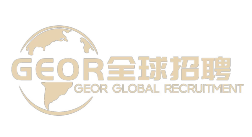Multinational Enterprise Talent Strategy Upgrade: Full Link Methodology for Efficient Recruitment of Overseas Employees
Multinational Enterprise Talent Strategy Upgrade: Full Link Methodology for Efficient Recruitment of Overseas Employees
Driven by the wave of globalization, the demand for localized talents is becoming more and more urgent when enterprises expand overseas markets. Recruiting overseas employees can not only quickly integrate into the local market, but also enhance brand affinity through the role of cultural bridge. However, cross-border recruitment faces multiple challenges such as time zone differences, cultural conflicts, and compliance risks. How to build a scientific and efficient overseas talent recruitment system? The following four stages: demand planning, channel expansion, screening and evaluation, and integration management, provide systematic solutions for enterprises.
1. strategy first: market insight-driven talent demand planning
The blind behavior of "recruiting for internationalization" should be avoided in recruiting overseas employees, it is necessary to carry out in-depth planning from the enterprise globalization strategy:
- market suitability analysis : according to the consumption habits, industry regulations and competition pattern of the target market, the skill combination of the required talents (for example, the talents who are familiar with the Islamic financial system are required in the Middle East market);
- team culture diagnosis : evaluate the cultural tolerance of the existing team, determine the proportion threshold of overseas employees, and avoid affecting the cooperation efficiency due to excessive cultural differences;
- cost-benefit calculation : comprehensively consider salary level, visa fee, training cost, etc., and formulate a talent acquisition strategy that meets the budget.
case reference : when a new energy automobile brand enters the European market, it gives priority to recruiting R & D personnel with German automobile engineering background and sustainable development concept by analyzing the concerns of local consumers on environmental protection technology, reduce the new product localization adaptation cycle by 40%.
2. channel innovation: building a global talent reach matrix
traditional recruitment platforms are difficult to meet the precise needs of overseas recruitment. Enterprises need to integrate multiple channels to form a three-dimensional network:
- vertical community : publish job information on GitHub (technical post), Dribbble (design post), Stack Overflow (engineer) and other platforms to attract highly matched talents.
- multinational talent market : participate in international talent summits organized by the United Nations Global Compact, the World Economic Forum, etc., and get in touch with compound talents with transnational vision;
- academic cooperation network : establish joint training programs with top universities in target countries, and lock in high-quality graduates in advance through internship programs;
- employees worldwide push : set up a "talent recommendation award" to encourage existing overseas employees to recommend their peers and use trust endorsement to improve recruitment quality;
- localization platform : publish information on mainstream recruitment websites in target markets (such as StepStone in Germany and Indeed in Japan) and optimize job descriptions to match local job hunting habits.
innovative practice : a cross-border e-commerce enterprise successfully recruited 12 local operation talents who are familiar with Southeast Asian consumption trends and established a user co-creation mechanism by launching a "global product selection officer challenge" in TikTok.
3. scientific screening: establishing a cross-cultural talent evaluation system
The selection of overseas employees needs to break through the double barrier of language and culture, and enterprises can build a three-dimensional evaluation model:
- quantification of professional skills : objectively evaluate hard power through online programming tests (such as HackerRank) and design portfolio review.
- cultural adaptation evaluation : use Hofstede's cultural dimension theory to design situational test questions, examine the candidate's response to dimensions such as power distance and uncertainty avoidance;
- cross-cultural potential assessment : observe the candidate's communication flexibility and conflict resolution ability by simulating cross-border meetings, customer complaint handling and other scenarios.
tool recommend : use AI interview system (such as HireVue) for preliminary screening, and evaluate the cultural sensitivity and emotional stability of candidates through micro-expression analysis and semantic recognition technology.
Deep 4. Integration: Creating a Sustainable Overseas Talent Ecology
The retention rate of overseas employees is directly related to their sense of cultural belonging. Enterprises need to implement a full-cycle integration plan:
- digital onboarding support : develop a multilingual online learning platform, covering corporate culture, compliance policies, local life guides, etc.
- tutorial system training : equip each overseas employee with cultural mentor (local employee) and business mentor (senior expert), form a dual support network;
- flexible management : set core working hours according to time zone differences, allowing employees to independently arrange work rhythm on the premise of achieving their goals;
- career development empowerment : provide international certification training (such as PMP, CFA), cross-border job rotation opportunities, help overseas employees build global career paths;
- cultural integration activities : regularly hold "global culture week" to promote cross-cultural communication through lightweight activities such as food sharing and traditional games.
data support : research shows that the 3-year retention rate of overseas employees in enterprises that implement systematic integration plans is 35% higher than the industry average, and the passing rate of innovative proposals by cross-cultural teams is 2.1 times higher.
conclusion
recruiting overseas employees is the key to the enterprise's globalization strategy. its success depends on strategic accuracy, channel innovation, scientific evaluation and humanized management. By building a full-link system from demand planning to long-term development, enterprises can not only break through geographical restrictions to obtain high-quality talents, but also stimulate innovation potential in multicultural collisions and build differentiated competitive advantages for the global layout. From precise positioning to deep integration, each step needs to be business value-oriented, data-driven decision-making, and ultimately achieve the win-win growth of enterprises and talents.
